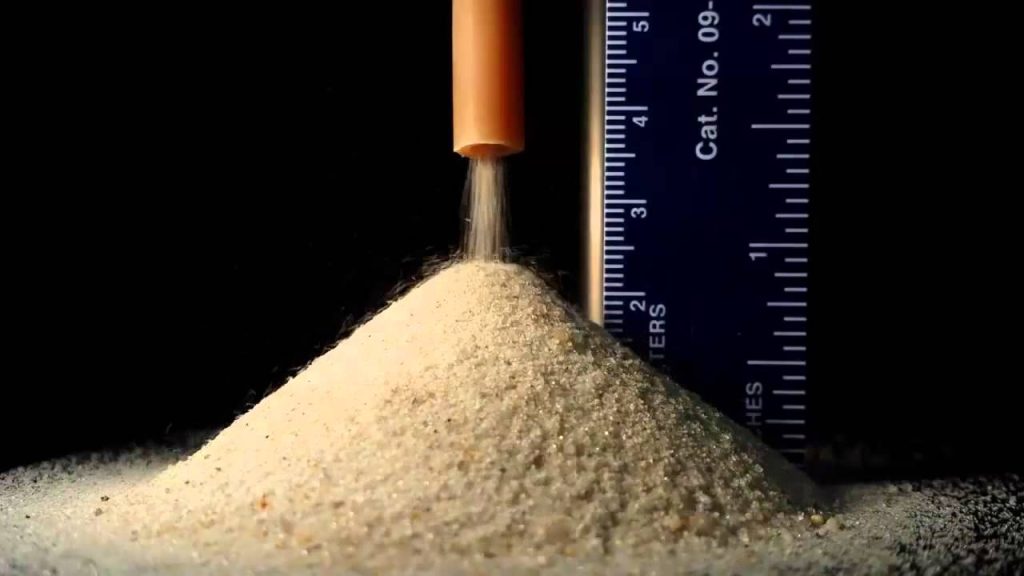Angle of Friction
Consider the block shown in Fig. 5.2 subject to pull P. Let F be the frictional force developed and N the normal reaction. Thus, at contact surface, the reactions are F and N. They can be combined to get the resultant reaction R which acts at angle θ to normal reaction. This angle is given by

As frictional force increases the angle θ increases and it can reach maximum value ![]() when limiting value of friction is reached. Thus, when motion is impending
when limiting value of friction is reached. Thus, when motion is impending

Angle of Repose
It is very well-known that when grains (food grains, sand, cement, soil etc.) are heaped, there exists a limit for the inclination of the heap. Beyond that the grains start rolling down. The limiting angle up to which the grains repose (sleep) is called angle of repose.
Now consider the block of weight W shown in Fig. 5.3 which is resting on an inclined plane that makes angle θ with the horizontal. When θ is a small, block rests on the plane. If θ is increased gradually a stage is reached at which the block starts sliding. The angle made by the plane with the horizontal is called angle of friction for the contacting surfaces. Thus, the maximum inclination of the plane on which the body, free from external forces, can repose is called angle of repose.
Consider the equilibrium of the block shown in Fig. 5.3. Since the surface of contact is not smooth, not only normal reaction but frictional force also develops. As the body tends to slide down, the frictional resistance will be up the plane.

Cone of Friction
When a body is having impending motion in the direction of P, the frictional force will be the limiting friction and the resultant reaction R will make limiting frictional angle with the normal as shown in Fig. 5.4. If the body is having impending motion in some other direction, the resultant reaction makes limiting frictional angle ![]() with the normal. Thus, if the direction of force P is gradually changed through 360°, the resultant R generates a right circular cone with semi central angle equal to
with the normal. Thus, if the direction of force P is gradually changed through 360°, the resultant R generates a right circular cone with semi central angle equal to ![]()
If the resultant reaction lies on the surface of this inverted right circular cone whose semi central angle is limiting frictional angle ![]() , the motion of the body is impending. If the resultant is within this cone the body is stationary. This inverted cone with semi central angle, equal to limiting frictional angle
, the motion of the body is impending. If the resultant is within this cone the body is stationary. This inverted cone with semi central angle, equal to limiting frictional angle ![]() , is called cone of friction.
, is called cone of friction.



Comments are closed